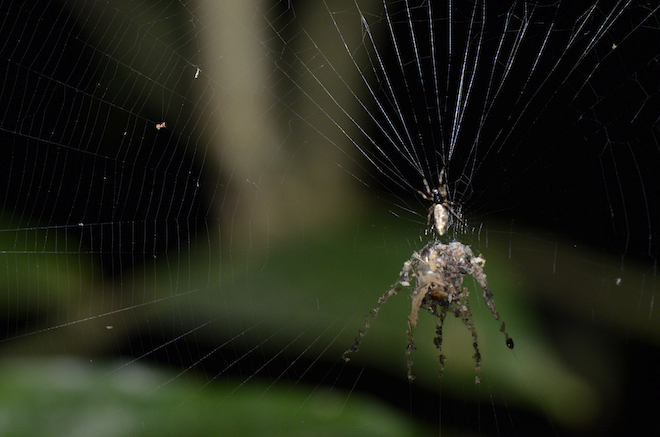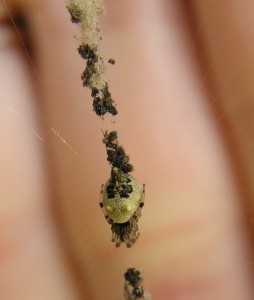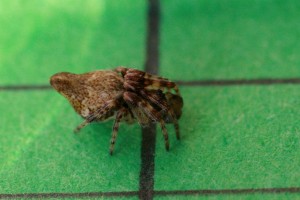The artists among the Cyclosa community — those small orb-weaving spiders, known for decorating their webs with trash — are getting better. At least in one corner of Peruvian rainforest, where someone with an ecotourism company spotted this tiny sculptor having an exhibition at roughly eye level. Now, the trash-line spiders have long been observed cluttering up their homes purposefully. It’s not that they’re lousy housekeepers. It seems that if you compile a, well, pile of dead bugs and other debris you might attract more predators, but those predators will have a lesser chance of picking you out among the junk. Smart, those spiders. What you call a strategy of pre-emption.
But this photo by Phil Torres of Rainforest Expeditions is yet more marvelous. Walking among the brush, Torres spotted what he thought was a live spider wiggling and twisting in a web. But it looked off … flaky and dried-out. As well it should, since it was made of bits of leaf and bug body parts. The actual spider was right nearby, tinier than its mummy, and it apparently was giving the web a twang now and then to make the scarecrow move about realistically. Torres found multiple members of this still-unidentified species not far away.
As much as I love to anthropomorphize, I know this small creature wasn’t thinking of Day of the Dead flair as it did its work. In fact, for all the amusement and fascination this image is sparking on the internet, it’s not clear that there was anything deliberate in the spider-shaped accretion. The silk lines do happen to converge there, spiders like to sit where the lines meet, and it’s possible the junk collection merely overflowed. Still, other Cyclosa research has shown that those who tend to make decoys usually build them about the same size as their bodies, which is interesting. If these spiders have an instinct for making scarecrows (scarespiders?), the legs are a natural next step. (Other photos on the site show effigies with eight legs, a realistic touch that really gives you pause). I like the contrast between the big, spooky decoy and the brisk, tiny spider doing the work.
If spiders can travel in space, I guess they can make piñatas too.


